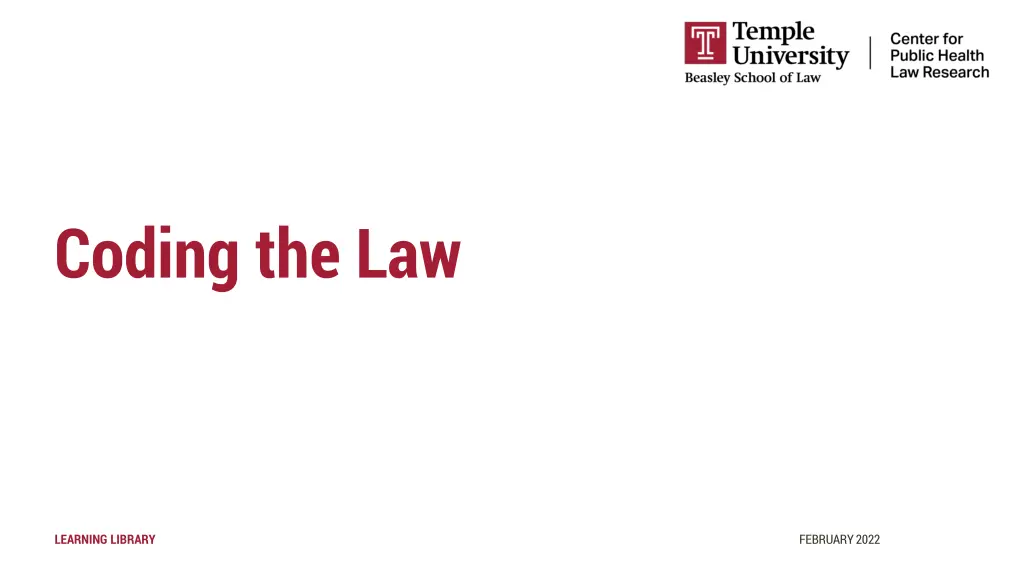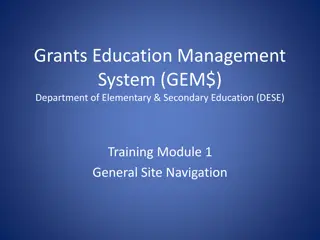
Understanding Coding the Law for Legal Assessments and Policy Surveillance
Explore the world of coding the law, distinguishing between coding for legal assessments and policy surveillance. Learn about the steps involved in quality control for coding, and how coding captures snapshots of laws or tracks their evolution over time. Delve into coding techniques for legal assessments and understand the behaviors restricted while driving under certain legal statutes.
Download Presentation

Please find below an Image/Link to download the presentation.
The content on the website is provided AS IS for your information and personal use only. It may not be sold, licensed, or shared on other websites without obtaining consent from the author. If you encounter any issues during the download, it is possible that the publisher has removed the file from their server.
You are allowed to download the files provided on this website for personal or commercial use, subject to the condition that they are used lawfully. All files are the property of their respective owners.
The content on the website is provided AS IS for your information and personal use only. It may not be sold, licensed, or shared on other websites without obtaining consent from the author.
E N D
Presentation Transcript
Coding the Law LEARNING LIBRARY FEBRUARY 2022
Learning objectives Define coding the law Understand the difference between coding for legal assessments (cross- sectional) and coding for policy surveillance (longitudinal) Introduce steps used to perform quality control on coding 2
Define coding the law Coding the law consists of using the legal text collected to answer the questions developed The goal of coding is to read, observe, and record the law, rather than read and interpret the law Module 3 Module 4 Module 5 Code answers to questions based on collected law Collect laws Develop questions 3
Coding for legal assessments vs. coding for policy surveillance Coding for legal assessments Code the law once for each jurisdiction, capturing a snapshot of the law at one point in time Coding for policy surveillance Multiple versions of the law are coded for each jurisdiction, representing different points in time Researchers code a new record of the law for each amendment made to the law Longitudinal coding shows the law s evolution over time 4
Legal assessment coding QUESTION LEGAL TEXT RESPONSE Alaska Stat. 28.35.161 Use of electronic devices while driving; unlawful installation of television, monitor, or similar device What behaviors are restricted while driving? (a) A person commits the crime of driving while texting, while communicating on a computer, or while a screen device is operating if the person is driving a motor vehicle, and (2) the person is reading or typing a text message or other nonvoice message or communication on a cellular telephone, personal data assistant, computer, or any other similar means capable of providing a visual display that is in view of the driver in a normal driving position while the vehicle is in motion and while the person is driving A. Handheld electronic messaging Handheld calling Hands-free electronic messaging Hands-free calling A. Handheld electronic messaging B. C. D. 5
Coding for policy surveillance Iteration 2: Iteration 1: October 28, 2013 January 1, 2016 December 1, 2001 - October 27, 2013 NY VEH & TRAF 1225-c Use of mobile telephones [ ] NY VEH & TRAF 1225-c Use of mobile telephones [ ] 4. A violation of subdivision two of this section shall be a traffic infraction and shall be punishable by a fine of not less than fifty dollars nor more than one hundred fifty dollars upon conviction of a first violation 4. A violation of subdivision two of this section shall be a traffic infraction and shall be punishable by a fine of not more than one hundred dollars. Q: What is the maximum penalty for a violation? Q: What is the maximum penalty for a violation? A: One hundred fifty dollars A: One hundred dollars 6
Quality control and coding Quality control occurs throughout the entire coding process Original coding is checked daily by the supervisor Redundant coding is assigned and reviewed by the supervisor throughout the life of the project Redundant coding consists of two researchers independently coding identical records as assigned by the supervisor The supervisor compares and reviews these records to determine on what responses the researchers diverged Na ve coding consists of a na ve coder coding a sample of records for that project The supervisor compares and reviews these records to determine on what responses the researchers diverged 7
Summary Coding the law consists of using the legal text you have collected to answer the questions you have developed For legal assessments, researchers code the law once for each jurisdiction For policy surveillance projects, multiple versions of the law are coded for each jurisdiction, representing different points in time The goal of coding is to read, observe, and record the law, rather than reading and interpreting the law. Policy surveillance captures what the law states Quality control is applied to coding by a supervisor assigning and reviewing original coding, redundant coding and na ve coding 8






















